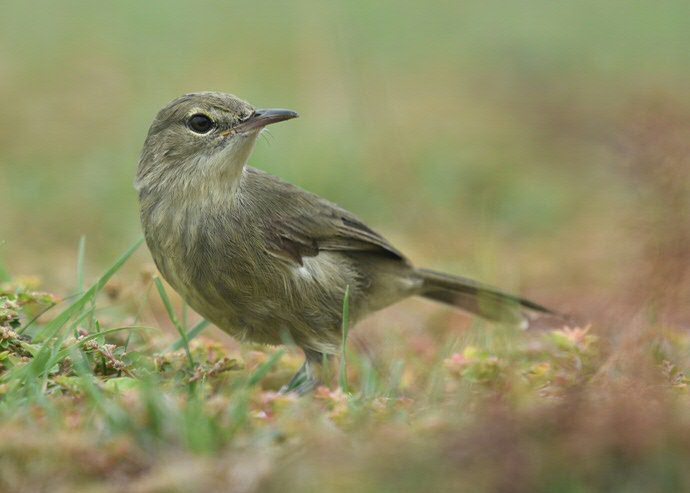‘Heroic’ songbirds rescue each other

We already know that some animals, including dolphins and ants, rescue animals of the same species from dangerous situations. Dutch researchers have now discovered that ‘heroic behaviour’ also occurs in wild birds. Martijn Hammers (GELIFES, University of Groningen) and Lyanne Brouwer (Australian National University and Netherlands Institute for Ecology NIOO) found evidence of this while studying the Seychelles warbler. Their findings have been published in the first week of April 2017 in the online edition of the journal Behaviour. The research was funded by the Netherlands Organisation for Scientific Research (NWO).
The Seychelles warbler is a small songbird with a highly social brooding system, in which not only the parents, but also brothers, sisters and even grandparents help to raise the fledglings. The lack of natural predators on the Seychelles allows these warblers to live to a relatively old age compared with most other small birds. The oldest known bird of this species lived to the age of 19. Long-term studies of Seychelles warblers have already provided new information about the evolution of their social behaviour.
Sticky seeds
Birds on the island of Cousin in the Indian Ocean sometimes become entangled in the sticky seeds of the pisonia tree, also known as the ‘bird-catcher tree’. The seeds become entangled in the feathers of the birds’ wings, rendering them unable to fly and forage for food. This is often fatal.
Martijn Hammers and Lyanne Brouwer discovered that Seychelles warblers rescue family members by helping them to remove the sticky seeds. They do this by pecking and tugging at the seeds with their beaks, with no regard for their own safety.
Rescue behaviour
Follow-up observations of the birds that had been rescued in this way after seeds had become attached to their wing feathers revealed that all the seeds had been removed. Martijn Hammers: ‘This rescue behaviour is a unique example of social behaviour. The rescuer must not only see that a group member is in danger, but must also recognize the cause of that danger and take the right course of action to neutralize it. In addition, the rescuer must try to avoid the same danger while carrying out its rescue operation. The fact that animals rescue animals of the same species from dangerous situations could be an indication of empathy, but more research is needed to exclude other explanations.’
Family success
When a Seychelles warbler rescues one of its own, this not only benefits the victim, but also the individual carrying out the rescue operation. Saving a group member increases the chances of the bird’s family group remaining intact and its ultimate chances of success. Hammers: ‘We expect to find this type of behaviour in other wild animals, particularly animals that live in family groups. The birds could also behave in this way in the hope that the favour will be returned if they find themselves in the same situation.’
Spreading seeds
The advantage of sticky seeds is that once they stick to the birds’ feathers, they can be spread to other islands. Furthermore, if a bird flies to another island and dies, the seeds have a greater chance of germinating because the dead bird serves as a source of nourishment. Although it is largely seabirds that fall foul of pisonia tree seeds, the seeds can also get stuck in the feathers of endangered songbirds, such as the Seychelles warbler.
More Information
- The article Rescue behaviour in a social bird: removal of sticky ‘bird-catcher tree’ seeds by group members was published online this week by the journal Behaviour.
- Authors: Martijn Hammers, researcher at the University of Groningen, GELIFES department; Lyanne Brouwer, researcher at the Australian National University and the Netherlands Institute for Ecology NIOO.
| Last modified: | 14 June 2021 09.54 a.m. |
More news
-
23 April 2024
Nine MSCA Doctoral Network grants for FSE researchers
Nine researchers of the Faculty of Science and Engineering have received a Horizon Europe Marie Sklodowska Curie Doctoral Network grant.
-
22 April 2024
Charissa Roossien secures JTF subsidy to develop Health Tracker
Dr. Charissa Roossien (ENTEG) has successfully secured a Just Transition Fund (JTF) subsidy of 1.8 million euros to develop a Health Tracker for reliable respiratory and metabolic analysis.
-
16 April 2024
UG signs Barcelona Declaration on Open Research Information
In a significant stride toward advancing responsible research assessment and open science, the University of Groningen has officially signed the Barcelona Declaration on Open Research Information.
